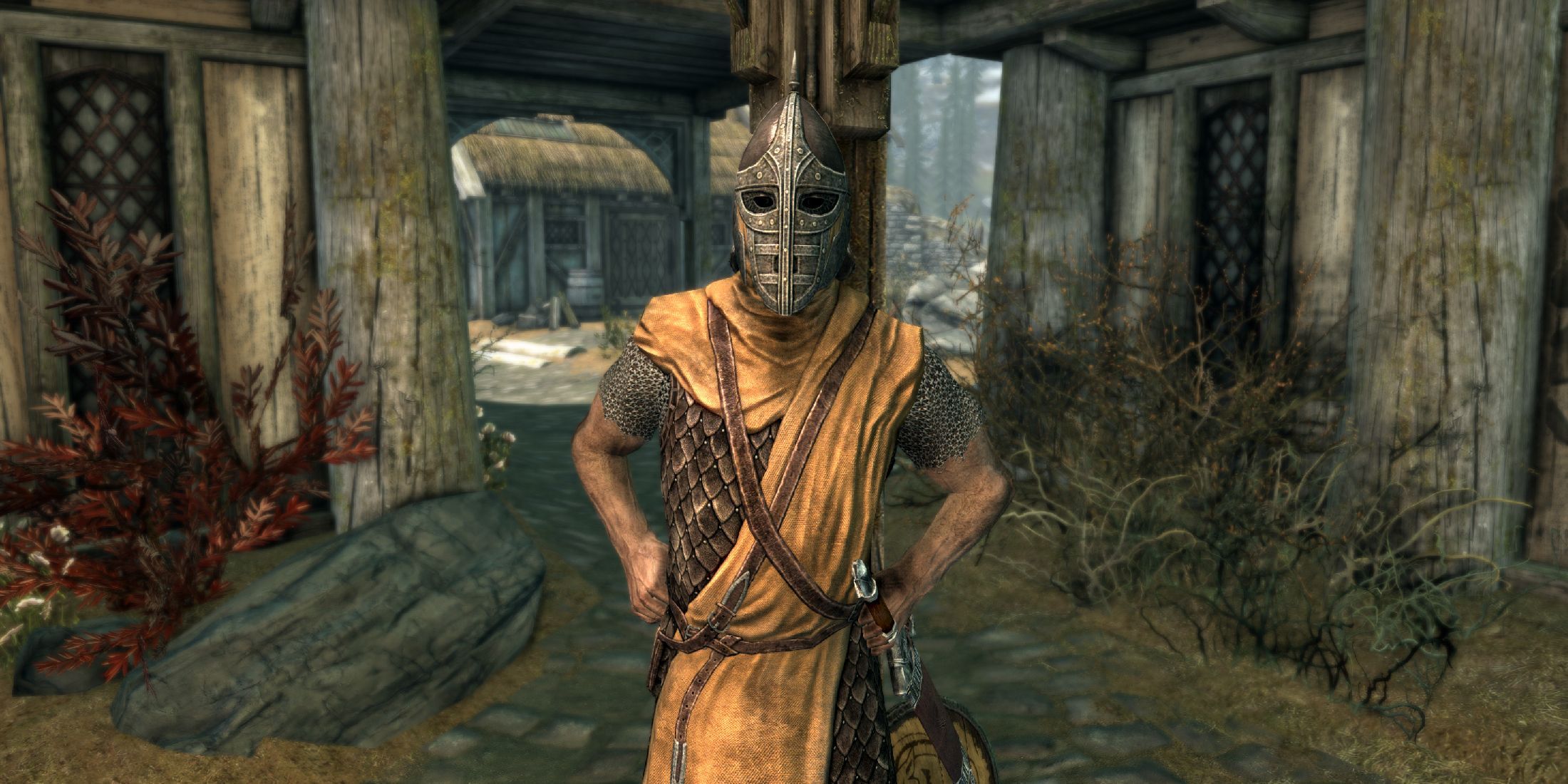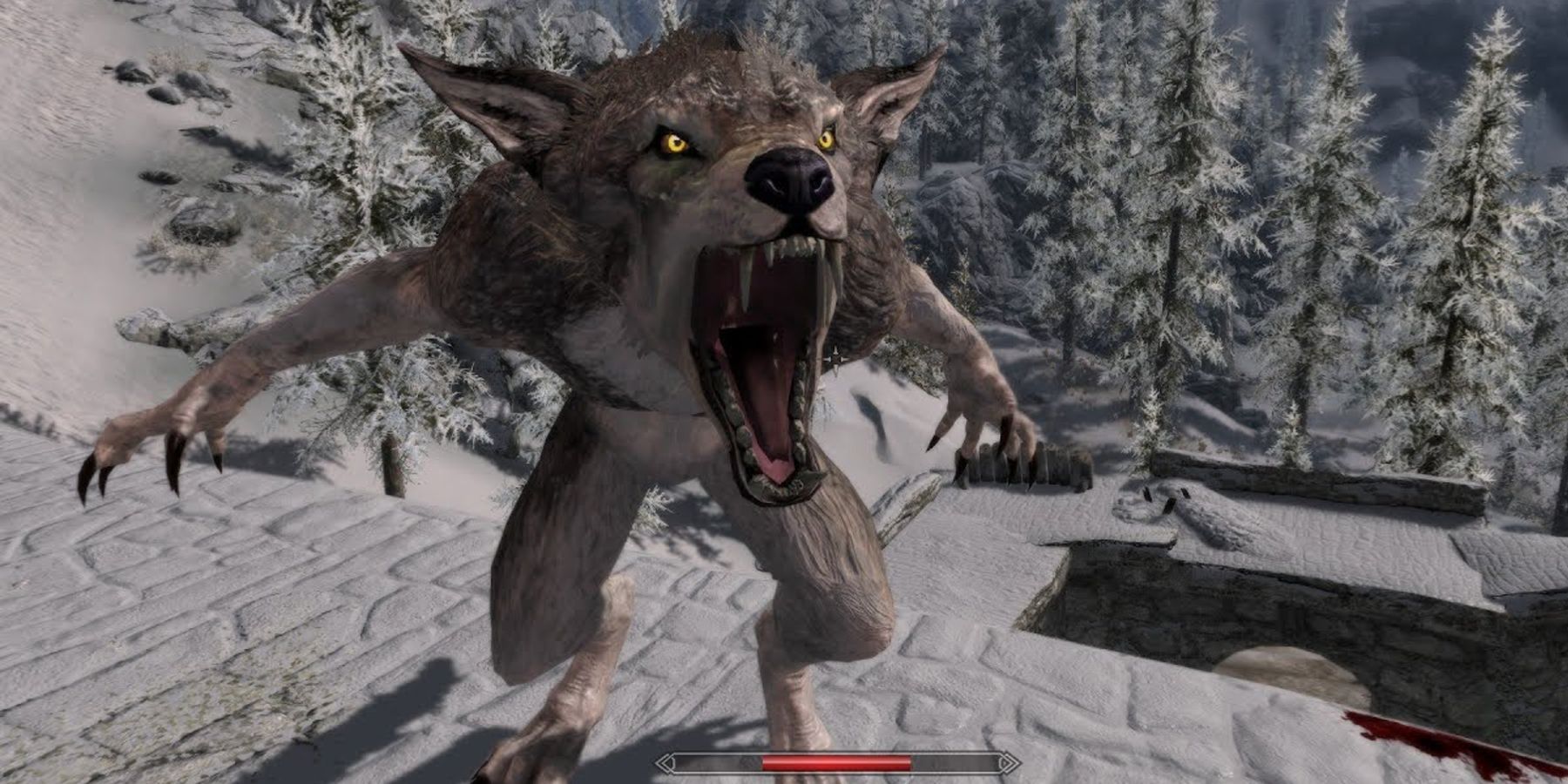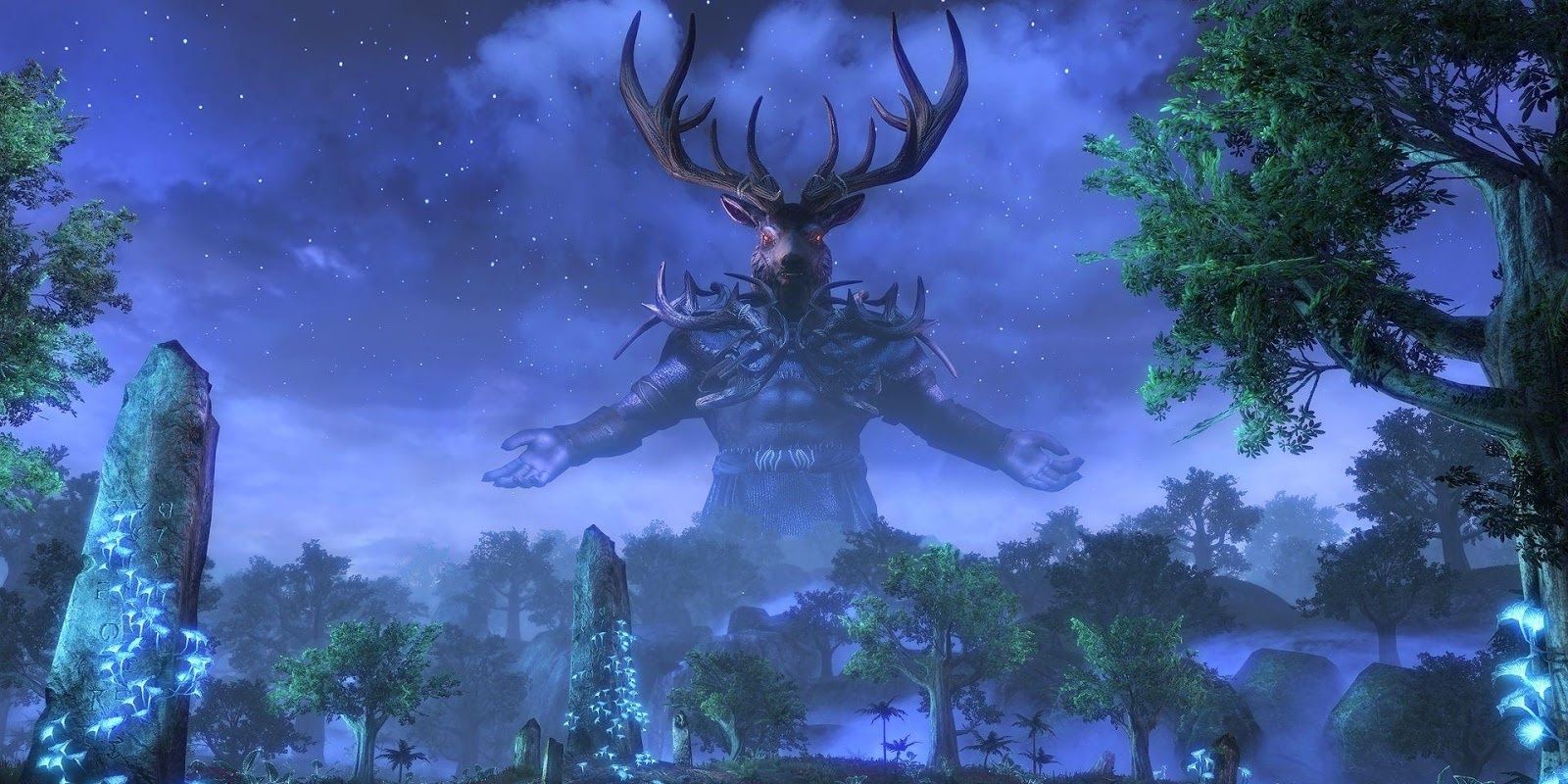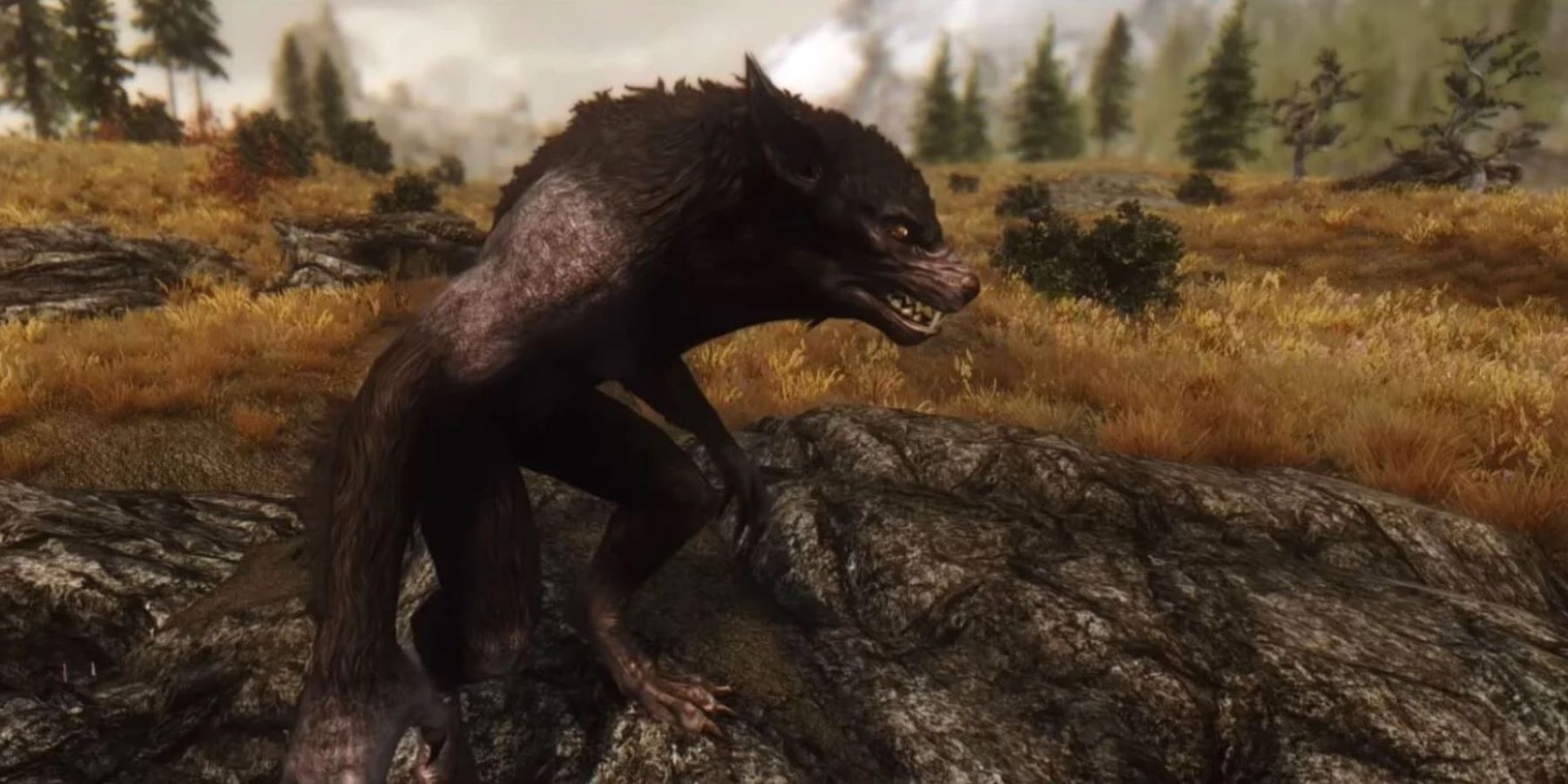Skyrim is filled with variety, not just in its landscapes and open world, but in the people who inhabit it. Despite the Stormcloaks' rallying cry of "Skyrim belongs to the Nords", Skyrim isn't monoethnic and hosts people of all races from across the Empire, from neighboring High Rock and Morrowind to even Elswyr, despite resistance from the native Nord population.
Lurking beneath the surface are people sub-cultures of peoples who lurk in the shadows: werewolves and vampires. Werewolves in Skyrim were popular with players before Dawnguard, but the expansion's addition of a skill tree expanded the state even more and made them more popular than ever. And, while the default version of werewolves is already pretty great for any playthrough with few drawbacks, there are a couple of ways to make a werewolf character a no-brainer.
Where Do Skyrim's Werewolves Come From?
Lycanthropy in The Elder Scrolls originates from the Daedric Prince Hircine, the Prince of the Hunt. Werewolves have been around for a long time in Tamriel, and lycanthropy is often seen as a blessing rather than a curse by devotees of the Daedric Prince. While there are a number of different types of werebeasts, including werebears, the Dragonborn is only able to become a werewolf. Werewolves are incredibly powerful; not only are they abnormally fast, but they're also capable of taking down most enemies with their claws and unnatural strength.
Werewolves have 100% disease resistance, including Sanguinare Vampiris, making combat against vampires easier. Resistance against disease is a massive boon as all diseases in Skyrim become a worry of the past. With the Ring of Hircine, werewolves have full control of their transformations, meaning they're not limited to only transforming once per 24-hour cycle. Werewolves automatically transform back to their human form but can extend their transformation by feeding on the bodies of the dead.
The Downsides of Werewolves in Skyrim
Werewolves have very few drawbacks, and the ones that are there are either very easily avoidable or worth the risk. The few drawbacks that werewolves have include the bounty incurred if the Dragonborn transforms in public, hostility from guards, and the removal of the Well-Rested bonus from sleeping. There are some bigger implications on a story level that haunt many of the other werewolves the Dragonborn meets.
Some of the werewolves in the Companions choose to cure their lycanthropy because of the condition that every werewolf's soul is claimed by Hircine and goes to his Daedric plane upon death. Some of the companions, such as the Kodlak, choose to cure their lycanthropy so that they may instead go to the Nordic afterlife of Sovngarde.
Another drawback that isn't expressed through gameplay but through lore is the savagery of the werewolves, primarily shown through the wild werewolves in the Dawnguard expansion pack who maul random travelers, and Sinding from "Ill Met By Moonlight", who was cursed by Hircine to have uncontrollable transformations and killed a child.
At the same time, this can create interesting conflict for the Dragonborn as they battle the monster within. On a more practical, gameplay level, acquiring Hircine's Ring gives the player full control of the Dragonborn's werewolf transformations, and the skill tree in Dawnguard gives even more perks for the werewolf abilities and transformation time, making it more advantageous than ever to embrace lycanthropy.
Unlike vampires, Skyrim's werewolves have no significant drawbacks and don't need to transform regularly to reap the benefits. On a practical level, it's well worth becoming a werewolf just for the 100 percent disease resistance bonus, but there's also a myriad of reasons to become a werewolf for roleplaying and story reasons in Skyrim, including a devotion to the hunt, a devotion to Hircine, and embracing the Dragonborn's bestial side.
The Elder Scrolls 5: Skyrim is available on PC, PS4, PS5, Switch, Xbox One, and Xbox Series X/S.






